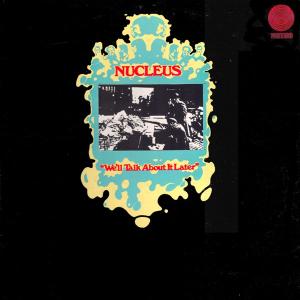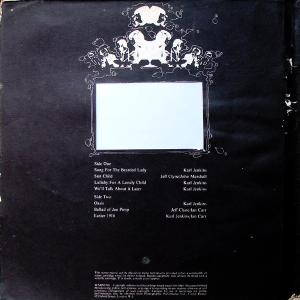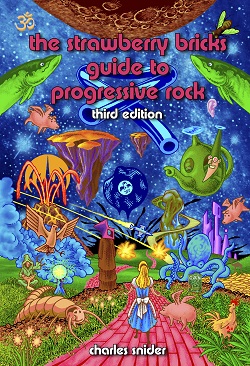We'll Talk About It Later


| Tracklist | |||
| A1 | Song For The Bearded Lady | ||
| Notes: |
Karl Jenkins - Written-By |
||
| A2 | Sun Child | ||
| Notes: |
Jeff Clyne - Written-By |
||
| A3 | Lullaby For A Lonely Child | ||
| Notes: |
Karl Jenkins - Written-By |
||
| A4 | We'll Talk About It Later | ||
| Notes: |
Karl Jenkins - Written-By |
||
| B1 | Oasis | ||
| Notes: |
Karl Jenkins - Written-By |
||
| B2 | Ballad Of Joe Pimp | ||
| Notes: |
Ian Carr - Written-By |
||
| B3 | Easter 1916 | ||
| Notes: |
Ian Carr - Written-By |
||
Karl Jenkins - Baritone Saxophone, Oboe, Piano, Electric Piano [Hohner Electra]
Jeff Clyne - Bass, Bass Guitar
Roger Dean - Design [Cover Design]
John Marshall - Drums, Percussion
Roger Wake - Engineer
Brian Smith - Flute, Tenor Saxophone, Soprano Saxophone
Chris Spedding - Guitar, Bouzouki
Pete King - Producer
Ian Carr - Trumpet, Flugelhorn
Released in a die-cut gatefold cover, opening from the inside.
First cat.nr. on label, second on spine and back cover.
Recorded September 21 and 22, 1970.
Produced for Ronnie Scott Directions Ltd.
Published by "Pop Gun Music"
℗ 1971

